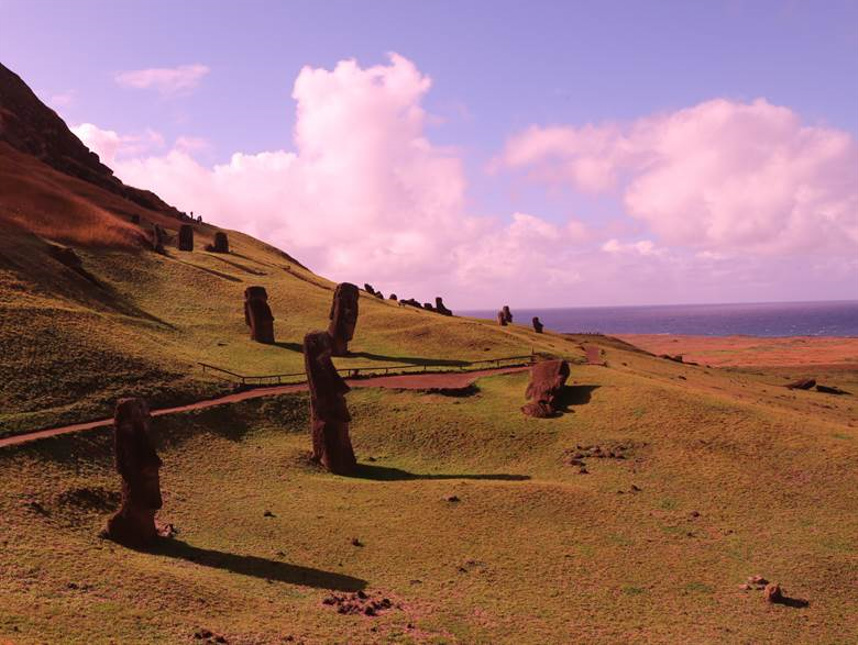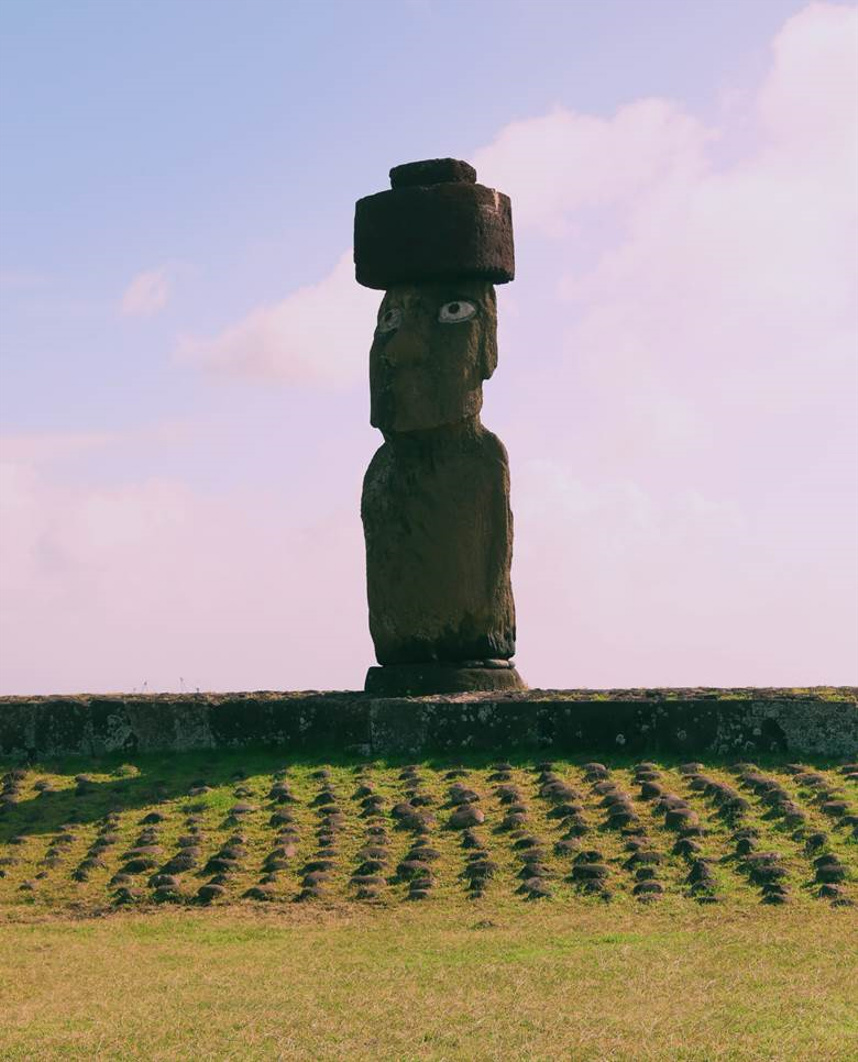
My Visit to Easter Island (Rapa Nui)

At the end of our visit to mainland Chile, we traveled to Easter Island, which the indigenous islanders call Rapa Nui. In fact, “Rapa Nui” is the name the indigenous islanders use for their people, their island, and their language. It is perhaps best known for its stone moai (mǝ wī′), which are monolithic human figures the Rapa Nui people carved from volcanic rock to represent and honor deceased ancestors.
The history of Easter Island is a cautionary tale of how overharvesting and mismanagement of scarce resources can lead to societal collapse. The island is one of the most isolated permanently inhabited places on our planet. Over 2,100 miles of South Pacific Ocean separate it from mainland Chile, and it lies approximately 2000 miles from the Marquesas Islands, and roughly 1600 miles from the Mangareva Islands. Archeologists believe Polynesians first settled on Easter Island sometime between 700 and 1100 A.D. When Chile annexed Easter Island in the 1880s, there were just over 100 people left on the island, a dramatic decline from an estimated population of between 15,000 and 30,000 just two centuries earlier. When European explorers first visited Easter Island in 1722, the population had already dropped to fewer than 3,000 people, and the island had largely been deforested. There were no trees on the island taller than 10 feet, which meant there was no way to build new canoes capable of reaching other inhabited islands. Between 1722 and 1825, all of the roughly 400 standing moai were deliberately toppled by Easter Islanders, as political unrest, civil war, starvation, and even cannibalism led to the collapse of the Rapa Nui civilization and the deaths of thousands.
Prior to our visit, I had read Collapse: How Societies Choose to Fail or Succeed by Jared Diamond, which includes a chapter about Easter Island. It left me intrigued to see what we would find there, and to hear what local people we met there would have to say about the island’s grim history. What we found exceeded all my expectation. The island is a hauntingly beautiful place populated by beautiful, friendly people. Our wonderful Rapa Nui guide was very matter-of-fact about the island’s history and about how her ancestors’ mismanagement of resources and infighting led to ecological and human disaster. The volcanic island remains largely deforested, with sweeping vistas of rolling hills covered by short, green grass.

A view looking south from the Rano Raraku site where most of the nearly 900 moai statues were quarried, around 400 of which were erected on ceremonial platforms call “ahu” by various tribes around the island.

Toppled moai at Ahu Hanga Te’e on Easter Island’s southern coast.

Moai that have been set upright by archeologists in modern times after they were discovered at the Rano Raraku quarry site.

A fully restored moai on the western end of the island, with coral eyes. The red stone that sits atop the statue is a “pukao,” or “topknot,” representing the hairstyles of the island chieftains. This is how many archeologists believe the later moai looked circa 1600 A.D.
We had hoped to capture a photo of the southern Milky Way over the restored moai that are lined up on a rebuilt ceremonial platform on the southwest corner of the island called Ahu Tongariki. We had even gone so far as to talk to a local guide who could take us there after dark. Unfortunately, it was overcast with intermittent rain all three nights we were there. The clouds may not have made any difference, because the Moon was nearly full during our visit, and there’s an excellent chance it would have washed out most of the Milky Way in any pictures we attempted. Here’s a photo of Ahu Tongariki in daylight from near the spot where we would have set up for a wide-angle Milky Way shot:

If everything had gone perfectly, the wide-angle shot we were dreaming of might’ve
looked something like this fake mockup we created using Adobe Photoshop:

Rapa Nui is a gorgeous and unique place, and its history provides many powerful lessons about the perils that arise when human communities mismanage precious resources.
Copyright 2025 StarlingSkyBlog